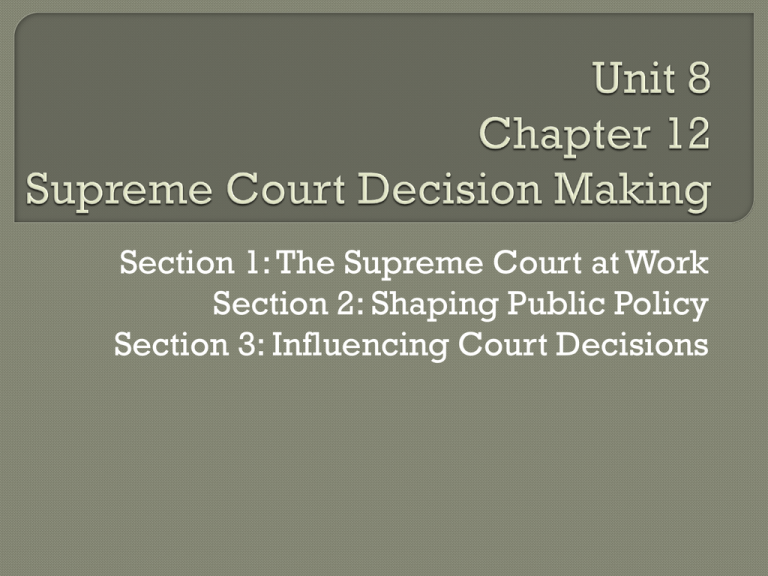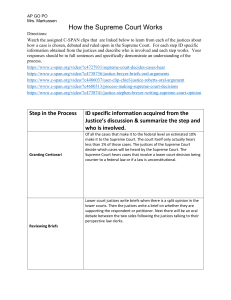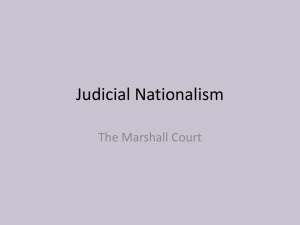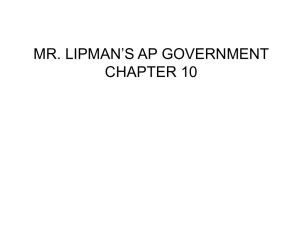Supreme Court Decision Making: Process & Influences
advertisement

Section 1: The Supreme Court at Work Section 2: Shaping Public Policy Section 3: Influencing Court Decisions How does the Supreme Court determine which cases it will hear and the outcome of the each case? 1. 2. Explain how certain cases reach the courts Evaluate the steps the Court takes in determining the outcome of a case The Supreme Court at Work http://www.youtube.com/watch?v=pyqE APYnhjk http://www.pbs.org/wnet/supremecourt/ Watch 1. 2. 3. three videos on this site: Creation of the Courts Showdown You have the right to remain silent 1) WRIT OF CERTIORAI An order from the Court to a lower court to send up the records Lower court has either made an error or a constitutional issue is raised 2) APPEAL Decision of lower federal or state court has been requested to be reviewed http://www.youtube.com/watch?v=w3un c4-EuLg Please watch this video. Appointed by the President and represents the federal government before the Supreme Court Determines whether the Federal government should appeal lower courts decisions to Supreme Court Who is the solicitor general of the United States? “Rule of Four”- only four of nine justices need to agree to hear a case Per Curian Opinionbrief, unsigned statement of the Court’s decision Occurs when court rules without consulting new information http://www.youtube.com/watch?v=Udue 9DlK3hg Brief- written statement setting forth the legal arguments, relevant facts, and precedents supporting one side of a case Amicus Curiae- briefs written by individuals, interest groups, or government that have useful information for the court to consider After briefs lawyers from each side present oral arguments before the court MondayWednesday They usually last 30 minutes http://www.youtube.com/watch?v=UJQ7 Ds4nAmA&feature=relmfu Chief Justice John Roberts on Oral Arguments Justices meet Wednesday and Fridays A tradition is they shake hands The conference meetings are secret A majority must be in agreement to decide a case, and at least 6 must be present. http://www.youtube.com/watch?v=SrrN QgbfIww Justice Kennedy on Court Conferences Opinion- written statements on cases they have already decided States the facts of the case, announces the Court’s ruling, and explains its reasoning in reacing the decision 1. Unanimous- all justices vote the same way. 2. Majority- expresses the views of the majority of the justices on a case 3. Concurring- Agree with majority’s decision but have a different reason why 4. Dissenting- opinion of justices on the losing side in a case http://www.youtube.com/watch?v=u9_w AVxKO1o Opinions and the Obama Healthcare Law











